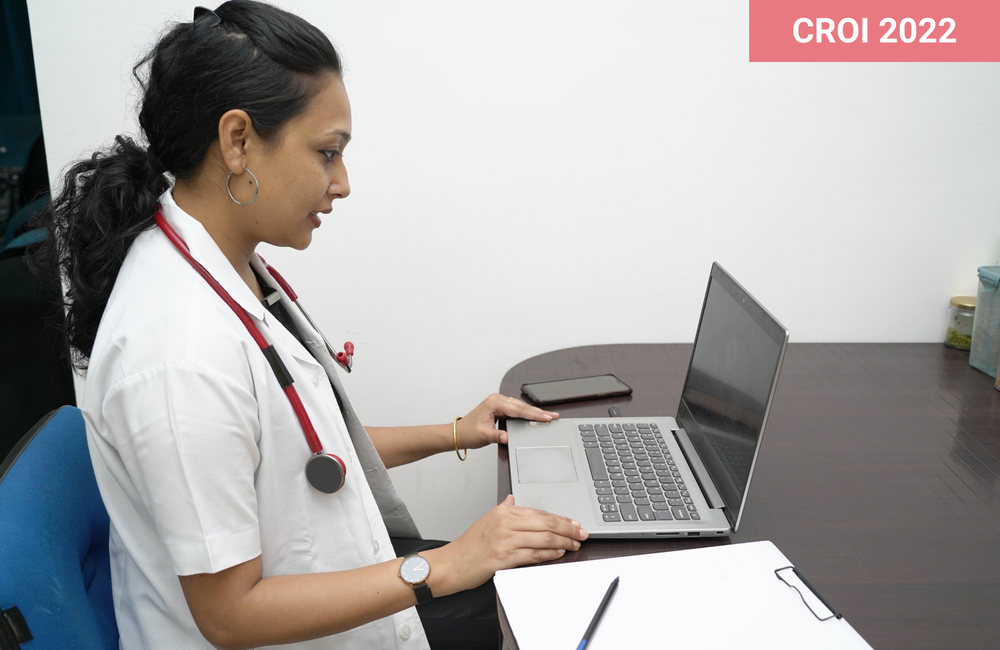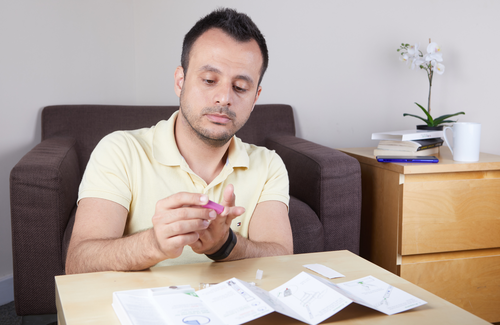
Virtual outreach workers are able to reach key populations in India to promote HIV testing, either with self-testing or at bricks and mortar facilities, researchers reported to the Conference on Retroviruses and Opportunistic Infections (CROI 2022) this week.
As HIV testing is the key entry point to HIV care cascade, it is worrisome that in India one in four people living with HIV do not know their HIV status. The COVID-19 pandemic has further negatively impacted the pace of HIV testing.
The studies presented at CROI 2022 show that virtual approaches can provide an additional entry point to increase uptake of HIV testing in those who are currently getting missed by traditional healthcare services. However, virtual approaches need to be improved so that all those who test positive go for a confirmatory test and are linked to health care.
Self-testing in India
Dr Jalpa Thakker of Johns Hopkins University showed the positive impact of using virtual platforms to offer HIV self-testing and provide linkage to care in government-run HIV centres.
During the second half of 2021, virtual outreach workers from HIV key populations connected with 9691 adults in India on dating apps and various social media platforms. They were directed to www.safezindagi.in for further follow-up, including an offer of an HIV self-test. HIV self-test kits were either delivered at the doorstep by a courier service, or collected by the individual from a community-run site, as preferred.
Self-testing could be done alone or with the assistance of an outreach worker on an audio or video call. Three-quarters opted for assistance and their test positivity in them was more than two times that of those who took the test unassisted.
Almost one-quarter of those who registered ordered an HIV self-test kit and 92% of them uploaded their test result. Almost half of this group were young people aged 18-29 and another 22% belonged to the 30-39 age group. Also the median age of those who tested positive was 27 years, showing the value of reaching out to the young.
All of those who took the self-test self-identified as one of the key populations: 79% gay and bisexual men, 8% transgender, 11% female sex workers, and 2% people who inject drugs. Gender-wise, 73% were male, 13% female and 8% transgender. As is evident, we need more innovative ways to reach out to women and transgender people who may not have been offered a test yet.
Based on self-reported behaviour, 54% were judged to be at high risk of HIV, 31% medium risk and 11% low risk.
The study reported a 5% HIV test positivity rate among those who opted for an HIV self-test (7% in transgender people). This is significantly higher than the HIV rate in most key populations. India’s 2017 data had reported 1.5% HIV prevalence among female sex workers, 2.6% among gay men, 6.2% among people who inject drugs and 3.1% among transgender people.
All those who completed risk assessment and had a positive result were testing for the first time.
However, out of 86 people who tested positive on a self-test in this study, only 49 completed a confirmatory test, and 35 were initiated on antiretroviral therapy.
Jalpa Thakker told aidsmap.com that it took huge efforts by virtual outreach workers to encourage people to go for a confirmatory test. Also, this study includes all those who tested positive up to the end of 2021, but does not include the results of follow-up being done by the virtual outreach workers in 2022.
She underlined the need to improve the model of providing virtual support to link people with government-run HIV services. Building rapport, trust, and community-led peer support are important.
Direct to consumer online approaches in India
In a second study presented by Jade Bell and colleagues of Johns Hopkins University, paid advertisements were used as part of online efforts from October 2019 to September 2021, to reach out to 9355 adults in India, and offer an HIV test at a private or public healthcare facility. Virtual outreach workers connected on dating applications, and followed up with WhatsApp-based personalised interaction for support. The respondents were predominantly gay and bisexual men (83%).
In this study, three-quarters (73%) of those who screened positive for HIV had never taken an HIV test before. Of those who tested positive, 97% were males, and 85% had syphilis.
Uptake of confirmatory tests was higher in this study (73%) than the previous one and 69% were linked to antiretroviral therapy.
Self-testing in the US
The conference also heard about a Centers for Disease Control and Prevention (CDC) programme which offered 100,000 HIV self-tests to people in the US and Puerto Rico. Dr Pollyanna Chavez said the programme built on earlier evidence that internet-based approaches to connect with people and mail them HIV self-tests in the US (such as the eSTAMP study) have worked.
The project aimed to offer these 100,000 HIV self-tests in 18 months but the uptake was so high that they could do so in only nine months in 2021. Also, 74% of the people asked for two self-tests.
Paid advertising on social media and partner outreach approaches were used to reach Black and Latino gay men, transgender women of all races and ethnicities, and Black women. These online campaigns were geo-targeted in locations with high HIV prevalence and more than half of the orders came from these areas.
Nearly half of the HIV self-tests were ordered by cisgender gay men (47%). In this study too most participants were male (68%), followed by 26% women and 2.4% transgender people, among others.
Over 84% of the people who ordered the self-test were aged 18-44, and around half of the orders came from Black and Latino people.
As was expected, a large percentage of younger people were first-time HIV testers. Twenty six per cent of the participants had never taken an HIV test before while another 33% had taken a test, but more than a year ago. Almost one third of women and transgender men were first-time testers. Among gay and bisexual men, first-time testers (18.4%) were more likely to be American-Indian and Alaska native people (21.4%). This first-time test rate was way higher than the 5% reported among gay men in the CDC HIV behaviour surveillance in the US.
However, no surveillance of test outcomes or follow-up was done. It is important that all those who test positive using a self-test are encouraged to take a confirmatory test, and linked to HIV care pathways as needed.
In addition, more innovative approaches that keep in mind local contexts are required to reach out to those who are being left behind by traditional healthcare services, such as women, transgender people and people who inject drugs, among others.
Thakker J et al. HIV self-testing uncovers high burden of hidden infections in India. Conference on Retroviruses and Opportunistic Infections, abstract 144, 2022.
View the abstract on the conference website.
Bell J et al. High positivity among clients of a virtual HIV testing strategy in India. Conference on Retroviruses and Opportunistic Infections, abstract 806, 2022.
View the abstract on the conference website.
Chavez PR et al. CDC’s direct-to-consumer distribution of 100,000 HIV self-tests. Conference on Retroviruses and Opportunistic Infections, abstract 143, 2022.

